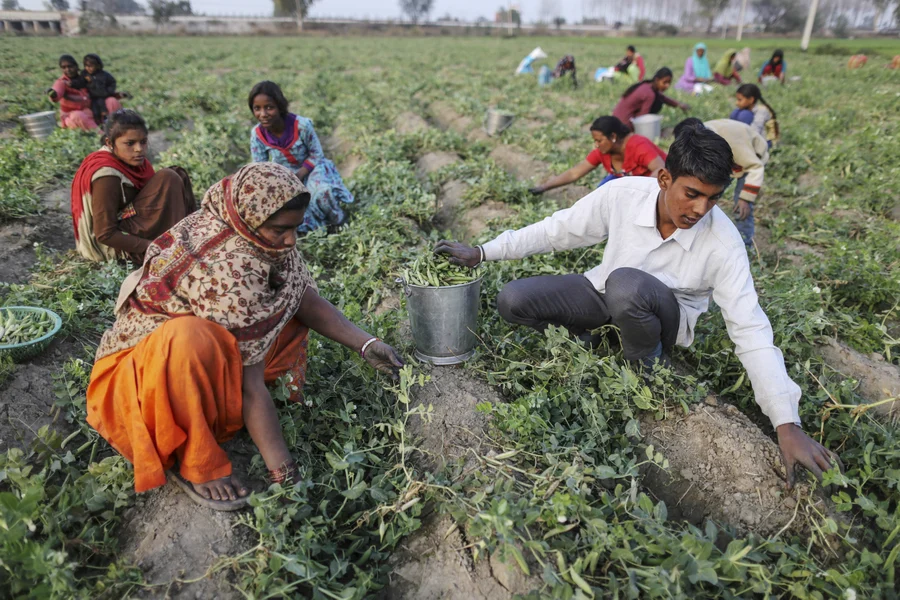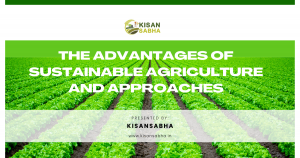In February 2019, the Modi administration launched its flagship Pradhan Mantri Kisan Samman Nidhi or PM-Kisan programme, a cash transfer seeking to raise farmer incomes amid a widespread and prolonged period of agrarian distress. The programme completes a year at a time when the malaise has spread across the Indian economy: GDP growth hit an 11-year low as rural consumption and wages weakened sharply. With the need for income support growing with each passing day, how has the Rs 6,000 transfer fared?
With 14 crore beneficiaries, PM-Kisan is one of the largest cash transfer schemes in the world. Accordingly, its accomplishments in its first year have been defined primarily by their sheer scale.Out of a total estimated 2019-20 budget of Rs 87,000 crore for 14 crore farmer-families, PM-Kisan had delivered Rs 36,000 crore to 7 crore beneficiaries by last December.
And yet the number of transfers, seemingly impressive at first glance, belie a programme design riddled with contradictions, hobbled by weak data, and beset by a bewildering implementation choice. Let’s consider each in turn.
Problems Beneath The Surface
First, PM-Kisan’s impact on consumption is limited by its sole focus on landowning farmers. The scheme excludes vulnerable tenant farmers or agricultural workers from receiving the benefit – NSSO data from 2013 found that 14 percent of land was leased to tenants across India, and was as high as 37 percent in Andhra Pradesh. As per the 2011 Census, there were 14.4 crore landless agricultural workers in India; no insignificant number. This is not an impossible challenge. While very much works in progress, state-level cash transfers for farmers like Odisha’s KALIA and Andhra Pradesh’s Annadata Sukhibhava Scheme have included tenant farmers and landless laborers by issuing tenancy records and using secondary procurement and subsidy databases.
This brings us to a related issue: the programme lacks a rigorous estimate of the number of farmers in India. PM-Kisan’s estimates of total beneficiaries and the accompanying budget are based on the 2015-16 agriculture census, which measures the number of agricultural landholdings in India. This is defined as land used for agricultural production without regard to title. However, only “farmer-families”—comprising a husband, wife, and their children—owning cultivable land are eligible for the transfer.
Since multiple families can own the same land, and the same family can cultivate multiple pieces of land, the programme faces a situation where there are more beneficiaries in states like Assam and Punjab today than the number of landholdings.

At an all-India level, however, government officials have noted that the target of 14 crore beneficiaries was a significant overestimate. As a result, the scheme only used two-thirds of its budget allocation for 2019. State-level officials spent several years building and verifying databases before delivering transfers under farmer income support programmes in Telangana and Odisha. With its hurried rollout prior to national elections, the lack of systematic investments in building institutional and informational foundations is hampering PM-Kisan’s performance.
A final operational issue involves PM-Kisan’s successive payments. The Rs 6,000 transfer is distributed in three installments of Rs 2,000 every four months, and has been provided for the following periods thus far: December 2018 to March 2019, April to July 2019, August to November 2019, and December 2019 to March 2020. However, the transfer is not delivered with a retrospective effect. Consequently, only those farmers registered under the scheme between December 2018 to March 2019 can expect to receive all four installments – approximately 4.1 crore out of the total 7 crore farmers.
Newly-registered farmers, therefore, miss out on the previous period’s installments, blunting the transfer’s effectiveness at providing immediate income support.
And yet, discrepancies in the number of beneficiaries per installment was only one of the several clarifications about PM-Kisan provided by the Ministry of Agriculture and Farmer’s Welfare to a parliamentary panel last December. Since beneficiary identification is undertaken by the states, state government officials also told the panel that inaccurate and outdated land records, authentication failures due to inconsistencies between Aadhaar data and bank accounts, and poor internet in rural areas were responsible for the delays in transfer delivery and beneficiary registration.

Where To Take The Programme Next
PM-Kisan is expected to continue for several years, and is reportedly forming the basis for developing a granular, real-time understanding of farmers’ spending and credit needs. But realising these ambitions will remain an uphill battle when several foundational questions regarding design and implementation remain unsettled.
There are two paths toward fixing these shortcomings. The first comprises a series of relatively straightforward operational fixes.
- Deliver installments with retrospective effect to newly-registered beneficiaries so the programme has a fighting chance at raising rural demand.
- Given the extensive Aadhaar seeding-related failures, keep Aadhaar authentication optional for future payouts (as it was for the first three PM-Kisan installments) at least until the process of beneficiary registration is complete.
A second set of reforms demands both imagination and ambition. Can PM-Kisan expand its scope to include tenant farmers? The merger of the Odisha-government run KALIA with PM-Kisan in December offers an instructive example for realizing this goal.Under the new joint programme, Odisha farmers receive Rs 6,000 from PM-Kisan and Rs 4,000 from KALIA (down from the original Rs. 10,000), while landless laborers and tenant farmers continue to receive Rs 10,000 from KALIA since they do not come under PM-Kisan.

If a similar spirit of cooperative federalism is adopted across India’s states, it is possible to imagine an expanded PM-Kisan scheme where the centre finances and delivers grants to landed farmers while states handle the same for tenant farmers and agricultural laborers. As with the KALIA-PM-Kisan merger, a set of common exclusion criteria can be applied to target out ineligible farmers while ensuring the safety net covers all vulnerable rural households – in turn reducing the burden on state capacity.
The shift toward universalism also removes the incentives for landowners to block attempts at providing benefits both legal and economic to those tilling their land. For both the centre and the states, this approach presents a promising pathway for expanding coverage and avoiding the dangers of excessively fine targeting, in addition to the electoral advantages on offer.
Crucially, this is fiscally viable for states already running income support programmes for farmers and agricultural workers.
For other states, seeing this approach in action is likely to make them seriously consider the opportunity cost of additional distortionary spending on subsidies and loan waivers.
PM-Kisan is only one of the many policy actions necessary for tackling the triple threat of an economic slowdown, an agrarian crisis, and falling rural consumption demand. And yet undertaking the necessary task of internal reorganisation at the central-level will only go so far. If PM-Kisan is to play its role well, it needs to bring the states along in its vision for empowering rural India.
Source: TheQuint
Link:https://www.bloombergquint.com/union-budget-2020/budget-2020-doing-more-with-pm-kisan-in-its-second-year




